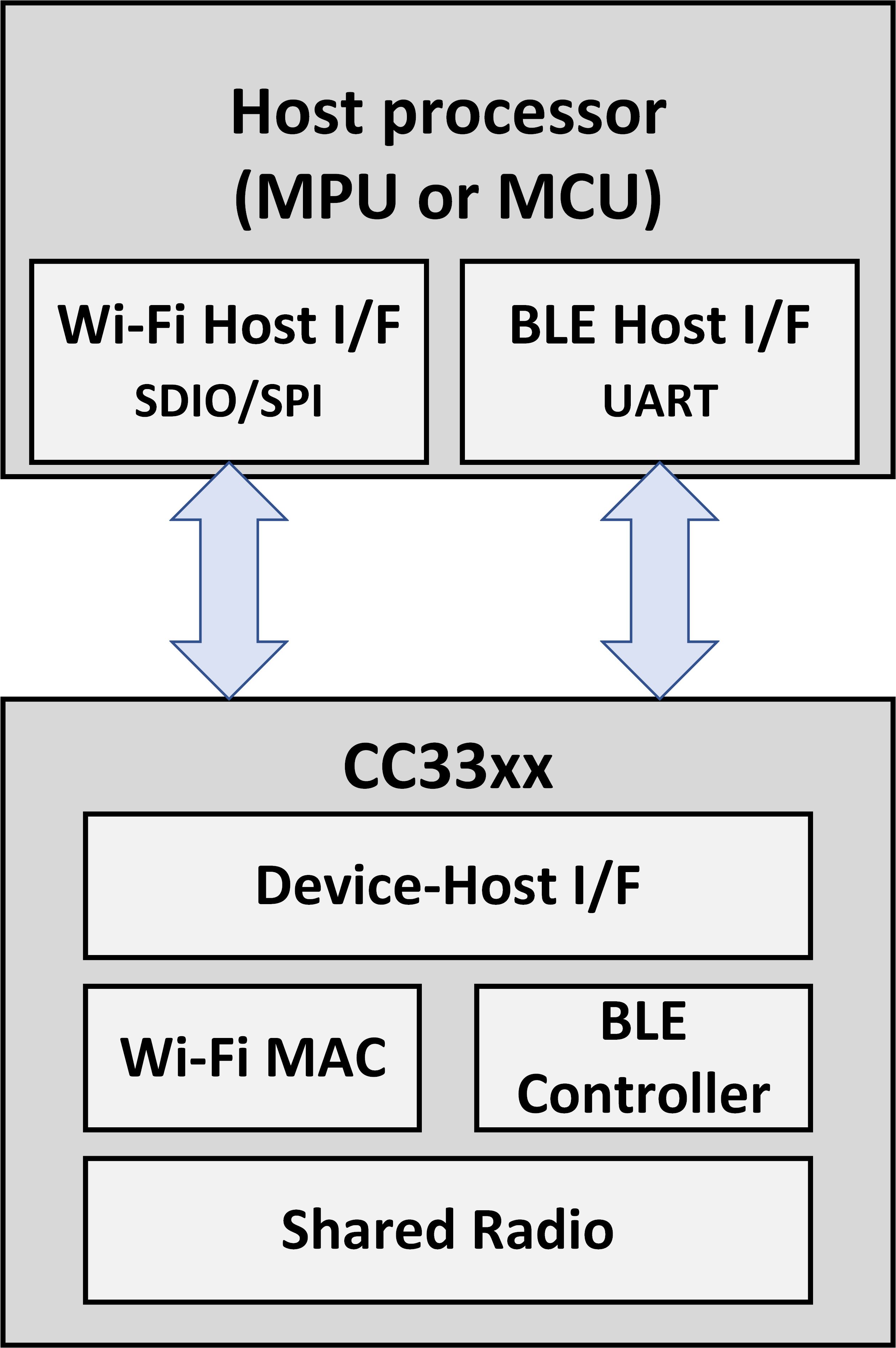SWRA779 September 2023 CC3300 , CC3301
2.1 Dual Host Interface
Dual host interface is the most common configuration where each IP uses its own interface. Wi-Fi may either use SDIO or SPI (the same hardware lines are used) and Bluetooth Low Energy uses UART lines. The dual interface mode is the most wasteful in terms of hardware pins. If SDIO interface is used for Wi-Fi, up to 10 lines are used, 6 for SDIO and 4 for UART. If SPI interface is used for Wi-Fi, up to 8 lines are used, 4 for SPI and 4 for UART. The calculation does not consider the extra interrupt lines. The full table with all pin count option is listed in Table 3-10.
Figure 2-1 illustrates the dual host interface setup.
 Figure 2-1 CC33xx Dual Interface
Figure 2-1 CC33xx Dual Interface
 Figure 2-1 CC33xx Dual Interface
Figure 2-1 CC33xx Dual Interface